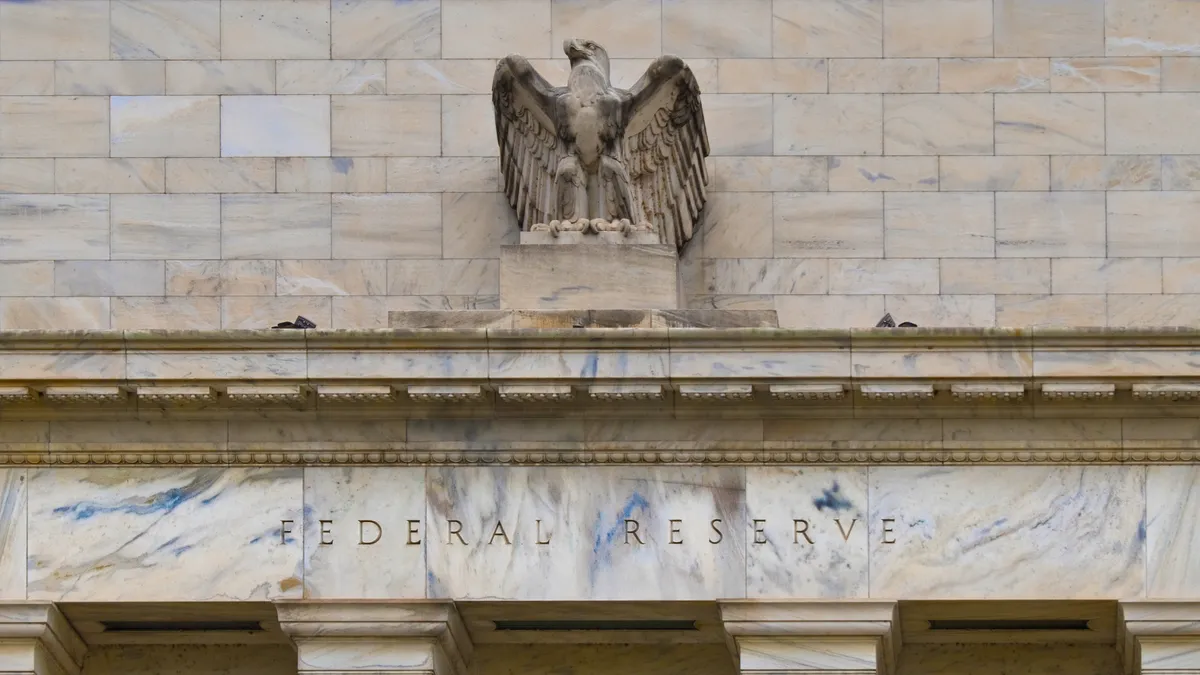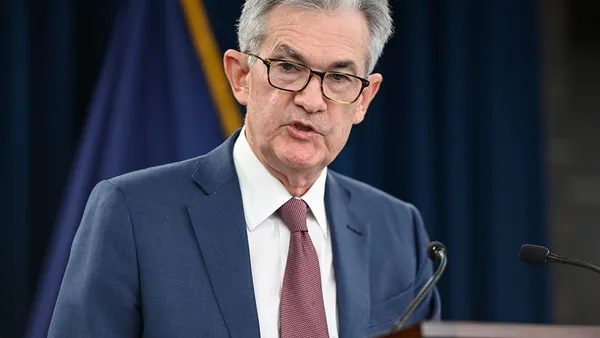Dive Brief:
- Federal Reserve Chair Jerome Powell said Monday that three recent data sets showing a decline in price pressures have bolstered the central bank’s confidence that inflation is falling toward its 2% target.
- “We didn't gain any additional confidence in the first quarter but the three readings in the second quarter, including the one from last week, do add somewhat to confidence,” Powell said, answering questions during an event sponsored by the Economic Club of Washington, D.C. Fed officials have said they will not trim the federal funds rate without first seeing a sustained decline in price pressures.
- With inflation slowing from a four-decade high, the Fed has sharpened its focus on the cooling labor market, Powell said, noting that the central bank’s mandate to promote maximum employment and price stability are “in much better balance.” He declined to comment on the outlook for monetary policy, the subject of a meeting by Fed officials July 30-31.
Dive Insight:
The consumer price index excluding volatile food and energy prices rose last month at the slowest pace since early 2021, increasing 0.1% compared with 0.2% in May, the Labor Department said Thursday. So-called “headline CPI,” which includes food and energy prices, slowed from a 3.1% annual rate in May to 3% in June, the slowest pace in a year.
“We did make some more progress” on curbing inflation during the second quarter after an unexpected increase in price pressures during Q1, Powell said. “We’ve now had three better readings.”
The Fed’s preferred inflation measure — the personal consumption expenditures price index — declined to 2.6% in May from 4% a year earlier. That and other progress quelling inflation has prompted policymakers to focus more on the job market, which has shown signs of loosening in recent months, Powell said.
“For a long time since inflation arrived, it's been appropriate to focus mainly on inflation,” he said. “But now that inflation has come down and the labor market has indeed cooled off, we're going to be looking at both mandates.
“They're in much better balance and that means that if we were to see an unexpected weakening in the labor market, then that might also be a reason for reaction by us,” he said.
The jobless rate rose last month to 4.1% from 4% in May and from as low as 3.4% in April 2023, according to the Labor Department.
Also, the ratio of available workers to open jobs has improved in recent months and the quits rate, or the number of workers who left their jobs as a percent of total employment, has fallen to within the top of the range that preceded the pandemic.
“The labor market, again, has moved into better and better balance to the point where I think you can now say it's essentially no tighter than it was in 2019 before the pandemic,” Powell said. “Remember that the labor market of 2019 was a very strong labor market — so we're back to that place.”
Traders in interest rate futures see 89% odds that the Fed will cut its benchmark interest rate by a quarter point at its September meeting, compared with a 71% probability a week ago, according to the CME FedWatch Tool. They see only 9% odds that policymakers will begin cutting borrowing costs at their gathering at the end of July.












